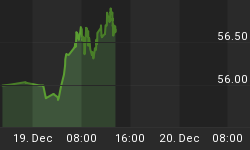It is not an impressive accomplishment to be surprised twice by the same news. Such a thing happens to three-year-olds, but grown-ups are supposed to adjust to incoming information. Nevertheless, that feat was accomplished on Friday when weak Employment data that was in-line with the ADP report and a number of other indicators of the employment situation.
The economy generated 54,000 new jobs in May, with a net downward revision of -39k to the prior two months. For reasons that are unclear, after ADP had printed 38k on Wednesday the bow-tied set was still expecting around 120k (judging only from those who changed their forecast; the Bloomberg survey average was still 165k due to stragglers who didn't change their forecast, either because they couldn't be bothered or because they thought their 200k+ forecasts were still good).
Forecasters had also expected, inexplicably, the Unemployment rate to decline to 8.9% from 9.0%, even with weak job growth. In the event, the rate rose from 9.0% (actually 8.960%) to 9.1% (actually 9.053%) and has now risen in consecutive months for the first time this year. In a humorous note, the press release from the BLS described the unemployment rate as "essentially unchanged." I am not sure how a rise of almost 0.1%, especially in the context of a presumed declining trend, can be construed as "essentially unchanged" unless you're just rounding to whole numbers.
There were both positive and negative internals so it's hard to say the underlying particulars belied the weakness. On the one hand, the number of people "Not in the Labor Force, Want A Job Now," which is one measure of the "unemployed inventory" (see my comment here for a chart of the measure last month), fell fairly sharply (4.8%). That's good news. On the other hand, the average duration of unemployment rose to another all-time record of 39.7 weeks (see Chart, source Bloomberg) and really shows no sign of even leveling off although it surely will soon.

Average Unemployment Duration shows no sign of flattening out.
Actually it looks more like an Apollo mission.
The Citi Economic Surprise Index plunged still further, to -117.2 in what now ranks as the second-worst trough ever. Indeed, the record dip in late 2008 covered 214.2 points, from 73.6 to -140.6 in three months from September 4th to December 5th; this decline is almost exactly equivalent from 97.5 on March 4th to -117.2 on June 3rd (214.7 points).
The reaction to this news was in a sense unusual because ordinarily after one surprise such as ADP it is often easier to be surprised back in the other direction. In a more conventional sense, it wasn't at all shocking that stocks fell (-1.0%) to the lowest close since March as it becomes clearer and clearer that, whether it's an effect of the Japanese tsunami or of the ebbing of the monetary tsunami, economic conditions are worsening with surprising alacrity.
Bonds rallied, again no surprise, with the 10y yield poking back below 3% to 2.99%. Interestingly, inflation swaps were close to unchanged and commodities rose slightly. The dollar dropped again; these last few points seem to hint that some investors are hoping/worrying about the next QE (even though I continue to believe there is almost no chance of QE3 absent a Lehman-like debacle).
The movement of the 'Economic Surprise Index' shows you that this economic turn of events has completely surprised economists (not to mention policymakers), but it also means that the conditions are starting to be in place to force economists (and investors) to start lowering their expectations. Once they lower expectations sufficiently, upside surprises can occur and the market can potentially swing back in the other direction. So far, I don't see much evidence that opinions are changing. There is just an amazing degree of confidence in policymakers (again, among economists and professional investors) on both the fiscal and monetary sides to pull the right levers. Confidence, as well as lack of imagination. The current distinct lack of inflation fear (indeed, ebbing fear as demonstrated by recent weakening in inflation swaps) derives from the weakening economy. We all learned in school that output gaps cause disinflation, and there are large output gaps in every major economy. Now, it isn't actually the case that output gaps dampen inflation, but we all have that belief ingrained in us. Despite the fact that there is almost no other way out of the long-term debt predicament besides monetization and at least partial abrogation of non-contractual inflation-linked promises such as Medicare, investors are not at all anxious to protect against what seems almost assured to happen.
The lack of creativity is almost breathtaking. It took 24 years for the price level to double, from 1986 to 2010 as the CPI index moved from 110 to 220. The inflation swap market institutionalizes the market belief that there will be another doubling of the price level occurring over...almost exactly 24 years, from 2010 to 2034. The difference is that in 1986, the Federal Reserve was actively trying to disinflate and under Greenspan pursued a policy of "opportunistic disinflation," but in 2011 the Federal Reserve is still trying desperately to inflate (the economy, if not the price level...the problem is, monetary policy has little effect on the real economy and almost exclusively affects the price level).
Bill Gross and the currency markets have it right. It's a good time to get a long-term fixed rate mortgage, if you can. It's a bad time to be buying long-term Treasuries, at least for the long term. 4.2% 30-year bonds are going to seem mighty stupid in a few years.















